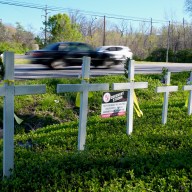People go to university to become lawyers, doctors and executives. It’s doubtful they go to become “monsters”; but to each their own.
It comes as no surprise that people want careers that pay well and allow them to make their mark on the world … and what better way to leave an imprint than a Mercedes-Benz parked in front of a mansion?
Of course, things weren’t always this way. People used to slug it out as Monsters and Lunatic Keepers. For real.
Take John Corbett, for example. In the 1901 Census, Mr. Corbett listed his occupation as a “lunatic keeper.” Not to be outdone, Mr. Robert Hosking cited his day job as a “monster.” It’d be a safe bet to say there was no Mercedes in either of their driveways.
That nomenclature might not hold up today. According to Karen Peterson, spokesperson for Ancestry.ca, Mr. Corbett was likely employed at some kind of mental health institution. And Mr. Hosking? Well, it’s likely he just didn’t like to be bothered.
But no matter what the job title was, folks like Mr. Corbett and Mr. Hosking have a lot to offer about the history of our country.
“From a personal history perspective, these stories are incredibly rich. They create a legacy” says Peterson.
After all, we all came from somewhere. And that place serves as a reminder that things weren’t always as they are today.
“It’s fun to see that these true stories exist,” she says. “They show how the nation has developed.”
For example, in 1901 there wasn’t the heavy emphasis on education that there is today. There were 30,000 “saloon keepers,” compared to only 1,000 doctors. That’s quite the discrepancy for a population just over five million.
If you needed to see a doctor at the turn of the century, you’d better have brought a great book along because you would’ve had quite the wait on your hands.
In 1901 there was roughly one doctor for every 5,000 patients. In comparison, these days — where every 531st Canadian has a doctor. The times, they have a-changed.
















